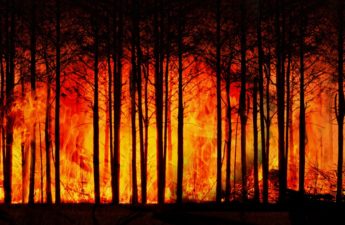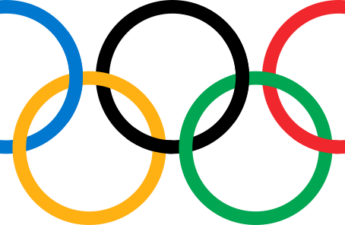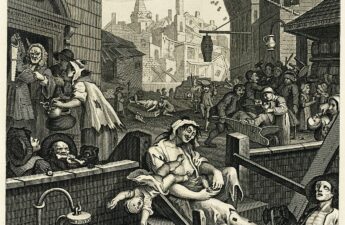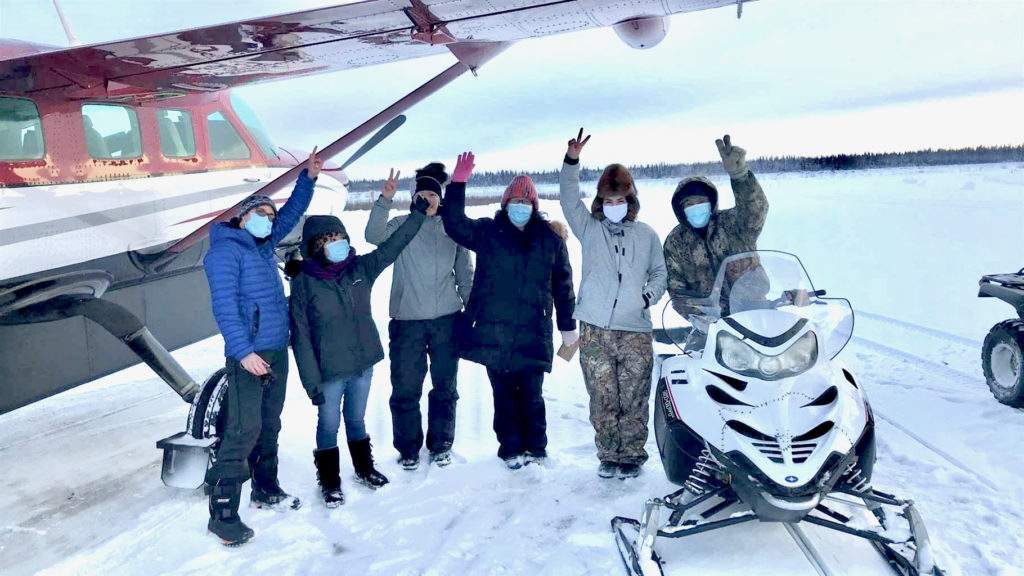
By Elaine S. Povich, Stateline
Alaska’s Herculean vaccine distribution effort this month evokes the historic “serum run” nearly 100 years ago that saved the town of Nome from a diphtheria epidemic and inspired the Iditarod sled dog race.
But this year, instead of driving dog sleds, the state used planes, amphibious vehicles and snowmobiles to make Alaska one of the most successful states so far at getting the COVID-19 vaccine into the arms of its residents. Mountainous terrain and wintry weather further complicated the effort.
“On my first airplane trip, the vaccine froze in the metal part of the needle when I was vaccinating on the tarmac and I had to keep it warm by tucking it between my coat and my shirt until right before we gave the vaccine,” said Dr. Ellen Hodges, Yukon Kuskokwim Health Corporation chief of staff, in an email.
“We vaccinated people on snow machines, on four wheelers, in trucks, in airplanes, standing on tarmacs in -20 windchill, in clinics, in houses—basically anywhere we could to get as many people vaccinated as quickly as possible. I feel like we are in a race against this terrible disease.”
Alaska dubbed its vaccine distribution effort “Project Togo,” named after the hardiest husky in the 1925 sled mush to Nome. The dog ran 350 miles of the 1,150-mile trek from Seward, Alaska, to Nome, on the Bering Sea.
“The vaccine froze in the metal part of the needle when I was vaccinating on the tarmac and I had to keep it warm by tucking it between my coat and my shirt until right before we gave the vaccine.” “
Dr. Ellen Hodges, Yukon Kuskokwim (Alaska) Health Corporation Chief of Staff
Most states’ vaccine distributions have been slow, confusing and erratic, with balky signup websites, arbitrary changes in eligibility and frequent mismatches between supply and demand.
But a few states with smaller populations have fared better. They started planning early, called up the National Guard to help even before they knew how or when to set up mass vaccination sites and scrapped the idea of using big chain pharmacies for distribution, knowing that smaller local drug stores had better handles on their clients’ qualifications and needs.
And the successful states ran their operation from central points, such as state health departments. That approach worked better than relying on counties and cities, which often were in conflict and resulted in, in some instances, computer-savvy residents of one county swiftly gobbling up appointments in another where signups were easier and vaccines were available.
Alaska has been among the most successful states, according to data from the Johns Hopkins Coronavirus Resource Center. It has vaccinated about 3.3% of its population, exceeded only by West Virginia with 3.8%.
South Dakota has vaccinated 3.2% of its eligible population, while Maine, New Mexico and North Dakota are at 2.9%.
Meanwhile, states with larger populations and relatively sophisticated health care systems, including Massachusetts and New Jersey, have been lagging, with 1.3% and 1.4% vaccinated, respectively.
In Alaska—the nation’s largest state geographically but the third least populous—the federal government sent a month’s worth of doses, a nod to the challenging logistics of a vast territory where transportation is difficult. (Most jurisdictions in other states have only gotten a week’s cache at a time.)
Additionally, Native American tribes were given their own allotments. And Alaska already had snow-ready medical teams it could charge with vaccine distribution.
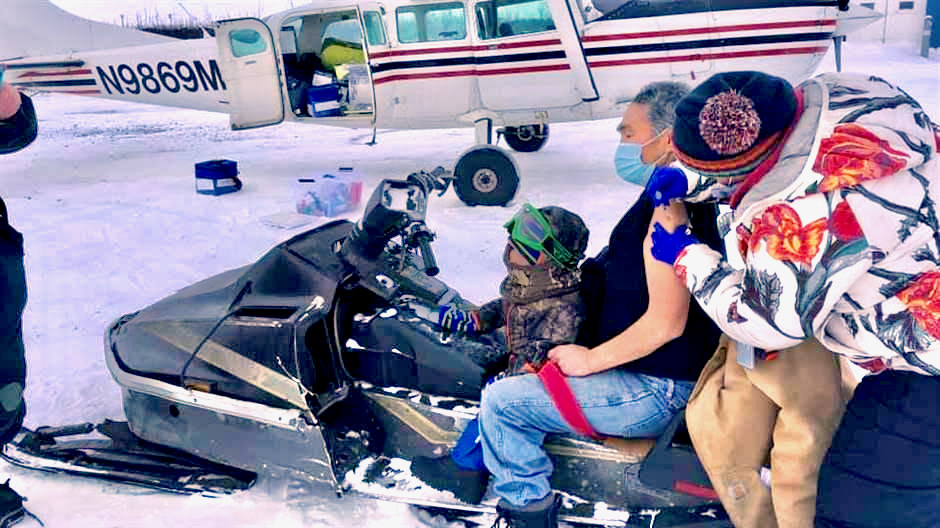
West Virginia, one of the nation’s most impoverished states and the 12th least populous, relied on independent pharmacies to start delivering vaccines, first to nursing homes, then to other sites. The pharmacies already had a relationship with many customers and an active database of contact information.
In South Dakota, the state employed three major health networks, dividing up the state into manageable chunks. Vermont officials set up a partnership with the state’s Association of Hospitals and Health Systems, which represents the state’s 14 nonprofit hospitals.
In some more populous states, vaccine centers have looked like queues for rock concert tickets. In Paterson, New Jersey, hundreds lined up before dawn to get vaccines at a center where no appointments were needed.
A drive-up, no-appointment facility in Daytona, Florida, was full by 6 a.m. The scattershot approach attracted some people from out of state, upsetting Gov. Ron DeSantis, a Republican, who publicly called for the Department of Health to restrict shots to residents. It did.
Now some populous states are taking a page from the successful states’ books and changing course, setting up more centralized systems, calling up the National Guard to help with distribution and revamping signup websites.
Massachusetts Gov. Charlie Baker, a Republican, unveiled several steps last month to speed up the rollout, including plans to open a mass vaccination site at Fenway Park, home of the Boston Red Sox, at the beginning of this month.STATELINE STORY September 1, 2020Virus Imperils Health Care Safety Net
California Gov. Gavin Newsom, a Democrat, said late last month that his state would streamline the vaccination process by building a statewide vaccine administration network instead of leaving distribution to county and local health authorities.
He also said that after the current group of eligible people are inoculated, age will determine vaccine eligibility. And, he said in a news release, a new website will streamline the signup and notification process.
William Galston, a senior fellow at the left-leaning Brookings Institution think tank in Washington, D.C., who looked at some of the rare success stories, said a couple of factors stand out.
First, he said, was the decision by some states to steer away from contracts with chain pharmacies such as CVS and Walgreens, which secured contracts to vaccinate people in senior living centers in many states.
The larger chains tended to hold back vaccines for second doses, even after first doses were not accepted by a number of nursing home workers.
A second important factor was adopting a centralized operation to distribute the vaccine instead of relying on local governments and health departments. Those entities often have conflicting criteria about eligibility and little coordination with nearby jurisdictions. When vaccine distribution plans were decentralized, residents jumped jurisdictional lines to sign up, creating overuse and chaos on websites ill-equipped to handle increased demand.
The third factor was an early reliance on the National Guard to set up clinics. Since reports of early successes emerged, more states have asked National Guard troops to set up field hospital-like vaccination centers or to help with distribution.
“Centralized decision-making has real advantages over the intra-county conflict that has broken out between counties in Maryland,” Galston said in a phone interview.
In Maryland, Prince George’s County recently had to bar residents from more affluent Montgomery County next door from crossing the county line to get vaccines. Other counties in the state have done the same.
Claire Hannan, executive director of the Association of Immunization Managers, a Maryland-based group of vaccination experts, said the common theme from the states that are doing well is that they have “a really strong relationship with their providers and they have strong messaging and leadership from the top.” She said Alaska, North Dakota and West Virginia, for example, are working closely with providers to help them manage their inventory.
“The concept is, this isn’t your inventory, it’s, ‘We’re sending you this to vaccinate the community,’” she said.
Some hospitals in larger states, meanwhile, seemed to consider their vaccine allocations hospital property, and if they couldn’t find enough people who fit the criteria for early vaccinations, gave shots that would otherwise spoil to younger, nonmedical workers.
“I think more states added the National Guard to their planning and to their response once they saw that the vaccines they were sending to hospitals weren’t going like hotcakes,” Hannan said. “They had to think differently.”
According to data from the federal Centers for Disease Control and Prevention, only about 62% of the nearly 50 million doses that have been distributed to states had been put into arms through Jan. 31. Part of that delay may be attributable to some states holding back doses to ensure that initial recipients get the second shot.
Low supply and high demand are the root of the problem, many governors have said. But inconsistent distribution rules have caused consternation among residents, many of whom are clamoring for vaccines, only to be thwarted by lousy websites when trying to make an appointment.STATELINE STORY November 10, 2020Vaccine Trial Raises Hopes, But Distribution Will Challenge States
In Maryland, for example, a vintage website that was previously used for people to sign up for annual flu shots and routine vaccinations for school crumbled under the weight of thousands of people trying to get appointments for COVID-19 vaccines. Some clinics showed available appointments only to reject attempts to book those times and dates. After a couple of weeks, Maryland came up with a completely different website for COVID-19 vaccinations, further confusing and complicating the issue.
Maryland also stumbled by relying too heavily on county health departments and private businesses such as grocery stores and pharmacies to distribute the vaccine, said Maryland Senate President Bill Ferguson, a Democrat. Unhappy with the rollout, Ferguson and other lawmakers established a working group, which he chairs, to monitor the Department of Health’s actions.
“In a decentralized model, different rules get applied to different people,” he said in a phone interview.
To his point, some Maryland counties are vaccinating anyone over 65 years old, while others are limiting it to those above 75 and certain priority workers. To speed up inoculations, Hogan just announced that six state mass vaccination clinics will be set up at fairgrounds and amusement parks in the coming weeks.
Ferguson said the limited amount of vaccine can be better managed at centralized locations. “That’s where the centralized system really matters,” he said. “It’s going to take political will to say to someone that we’re going to make you wait two weeks. It has to be clear and understandable.”
He praised West Virginia and Alaska for their centralized approaches, which he said not only more efficiently distribute vaccine, but also tamp down reluctance to the shot.
“I’ve become a big believer in the KISS strategy,” he said, using the acronym for Keep It Simple, Stupid. “With things like this, you can overthink it.”
